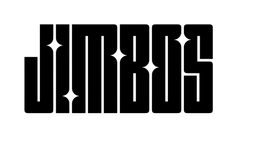What Is a Clay Bar? How It Works and Why You Need It
A clay bar might look simple, but it’s one of the most powerful tools in car detailing. It removes embedded contaminants from your paint that washing alone can’t touch—leaving your surface smooth, clean, and ready for protection.
If you’ve ever washed your car and it still felt rough to the touch, you’ve experienced what a clay bar is designed to fix. Here’s how it works, when to use it, and why skipping this step can leave your paint exposed and underperforming.
What Is a Clay Bar?
A clay bar is a flexible, sticky, synthetic resin or natural clay material designed to glide over the surface of your paint and pull out contaminants that are bonded to it. These include:
- Brake dust
- Rail dust
- Tree sap
- Industrial fallout
- Overspray and airborne pollutants
These particles lodge into your clear coat and are almost impossible to remove with just soap and water.
How Does a Clay Bar Work?
When lubricated properly, the clay bar glides across the paint and physically grabs onto contaminants sticking out of the surface. As you pass over the area, it pulls those particles out and holds them in the clay material—removing them safely without grinding them deeper into the paint.
This leaves your surface smooth and decontaminated, which is critical for applying waxes, sealants, or ceramic coatings.
Types of Clay Media
You’ve got a few options when it comes to claying tools:
- Traditional Clay Bar: Good for spot treatments or heavy contamination. Must be kneaded often to expose a clean surface.
- Clay Mitt: Easier to hold and reuse. Great for full-body claying and faster work.
- Clay Towel or Clay Pad: Similar to mitts but in towel or DA machine pad form. Great for pros and frequent use.
We’ll cover the pros and cons of each in detail in this comparison post.
When Should You Use a Clay Bar?
You should clay your car when:
- Your paint feels rough after washing
- You see tiny black or orange spots on your clear coat
- You’re about to polish, wax, or apply a ceramic spray
Claying before protection ensures better adhesion, longer durability, and a smoother finish. If you skip it, contaminants remain trapped under your protection layer—limiting performance and potentially damaging the paint.
What to Use With a Clay Bar
Using a dedicated clay lubricant is critical to avoid scratching your paint. A high-sudsing soap like The Super Soaper is perfect when diluted properly in a spray bottle or pump foamer.
After claying, it’s smart to apply protection immediately. We recommend sealing with Tough As Shell ceramic spray to lock in that clean finish.
Ready to Clay Your Car the Right Way?
Grab everything you need to safely decontaminate your paint and protect it afterward:
Related Posts
- Does My Car Need to Be Clayed?
- Clay Mitt vs Traditional Clay Bar – Which One Should You Use?
- Step-by-Step Clay Bar Process



